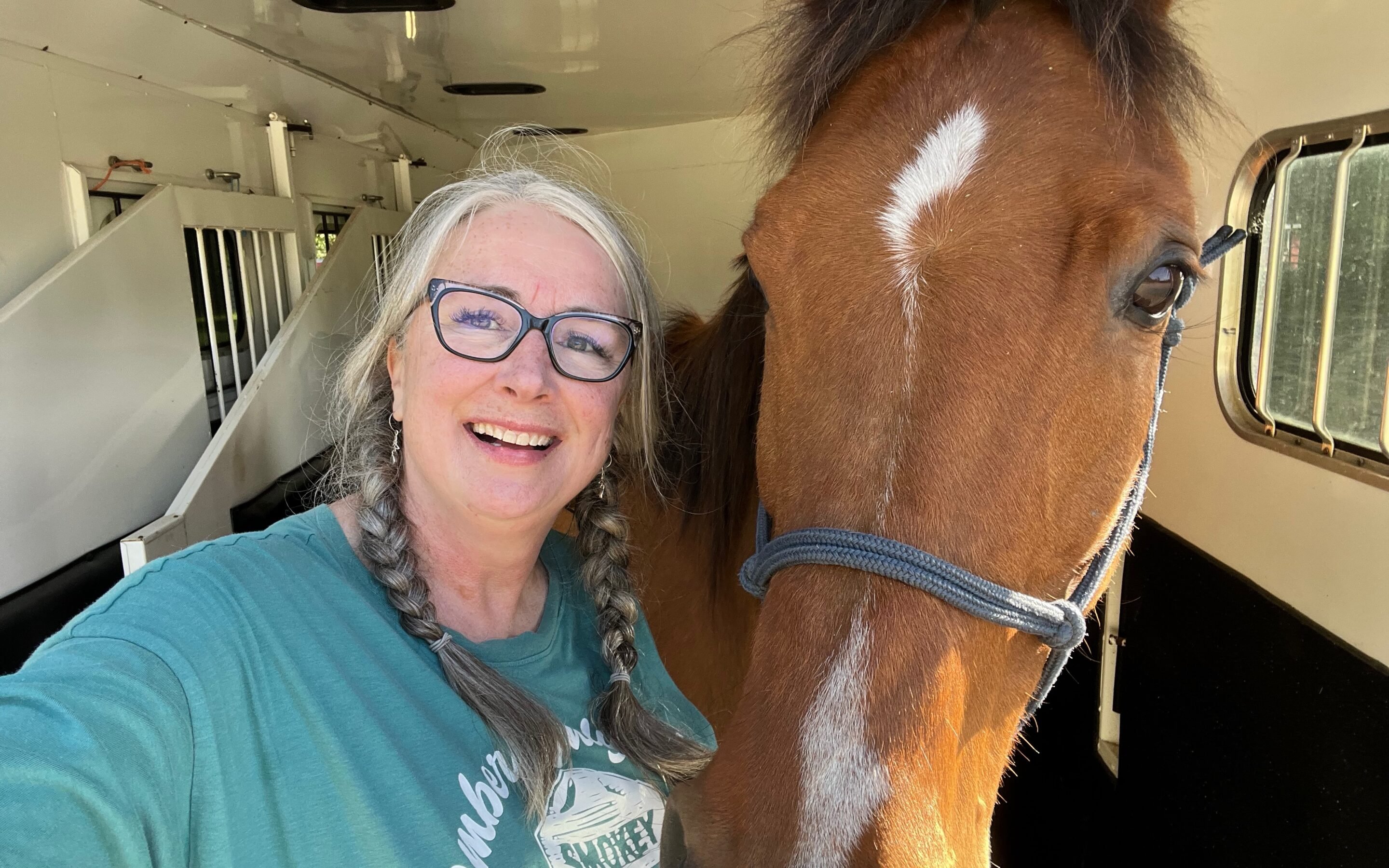Two weeks ago, we reported that Henry had regressed in his training a bit, becoming unfocused and exhibiting herd-bound behavior. A new routine was established for him: stand tied in the big covered arena while Jax gets worked, followed by some moving and flagging along the wall, followed by ground work with an emphasis on coming down from the trot to a relaxed walk, followed by trot poles, and then concluding with a trailer loading session. Happily, with consistent daily sessions, brave and sensible Henry made a reappearance.
Standing tied, as opposed to pawing tied, or piaffing tied, or screaming your fool head off tied, was a challenge for herd-bound Henry. He’s smart enough to know not to pull back, but he showed a lot of agitation when we began. I never left him tied up by himself in the arena, but while I worked Jax, Henry was left to figure things out on his own. Eventually there were brief periods of quiet between the screaming and pawing, and then the quiet bits started getting longer. He’s still got a way to go, but he’s much improved with this particular skill.
The objective of moving a horse while its tied is to show them that they can calmly and freely move their feet if they need to. Henry grasped this concept pretty quickly, but his concern about the flag meant that he wasn’t moving in a calm or relaxed manner. But with continued work, he got better. I saw the biggest change while touching him with the flag; he didn’t like it, but he tolerated it and eventually seemed to realize that it wasn’t such a big deal after all. This had significant effect on later lessons, particularly trailer loading.
Next up was ground work. A light sensitive horse like Henry can be a pleasure to work with on the ground, but not when that horse is frantically looking past you to try to spy his buddies in the pasture. To get his focus back, I kept him moving with lots of direction changes and lots of transitions. If you’ve followed Henry’s story thus far, you’re undoubtedly aware that transitions, especially the downward ones, have not been Henry’s forte, but he made great progress. By the end of the week, he was responding to non-verbal cues to come down to the walk, which was lovely to see.
Henry is great at trot poles, and we’ve used them since his arrival in hopes of strengthening his sticky stifles. I hope it’s not wishful thinking, but I feel like he’s having fewer stifle episodes every session.
On to trailer loading! Rumor had it that Henry was impossible to get into a trailer, so much so that his previous owner had to walk him from one location to the next. Obviously that’s not completely true because he was loaded into SAFE’s trailer on the day he was rescued, but we still accepted the fact that trailer loading was going to be a challenge. Using our three horse that has a ramp, we approached trailer training one small step at a time. Along the way, there were several encouraging behaviors that Henry displayed. One was an enormous amount of try. He’d step onto the ramp, and just look SO ready to take another step, if only he could! He remained nicely focussed on me during these sessions, and paid close attention to what he was being asked to do. He did not fly backwards off the ramp every time he made forward progress, and in fact, I could approach and pet him and he would make no attempt to back out. Best of all, he wasn’t overreacting to the use of the flag, so it became a useful tool if I chose to use it. It took seven days before he got all four feet into the trailer, but once he did, from that moment on, he would walk right up the ramp and into the trailer on a loose lead, no flag or pressure from behind needed. We established that the trailer was a good place, peaceful and quiet, and Henry is on board with it. Super proud of this special horse!


